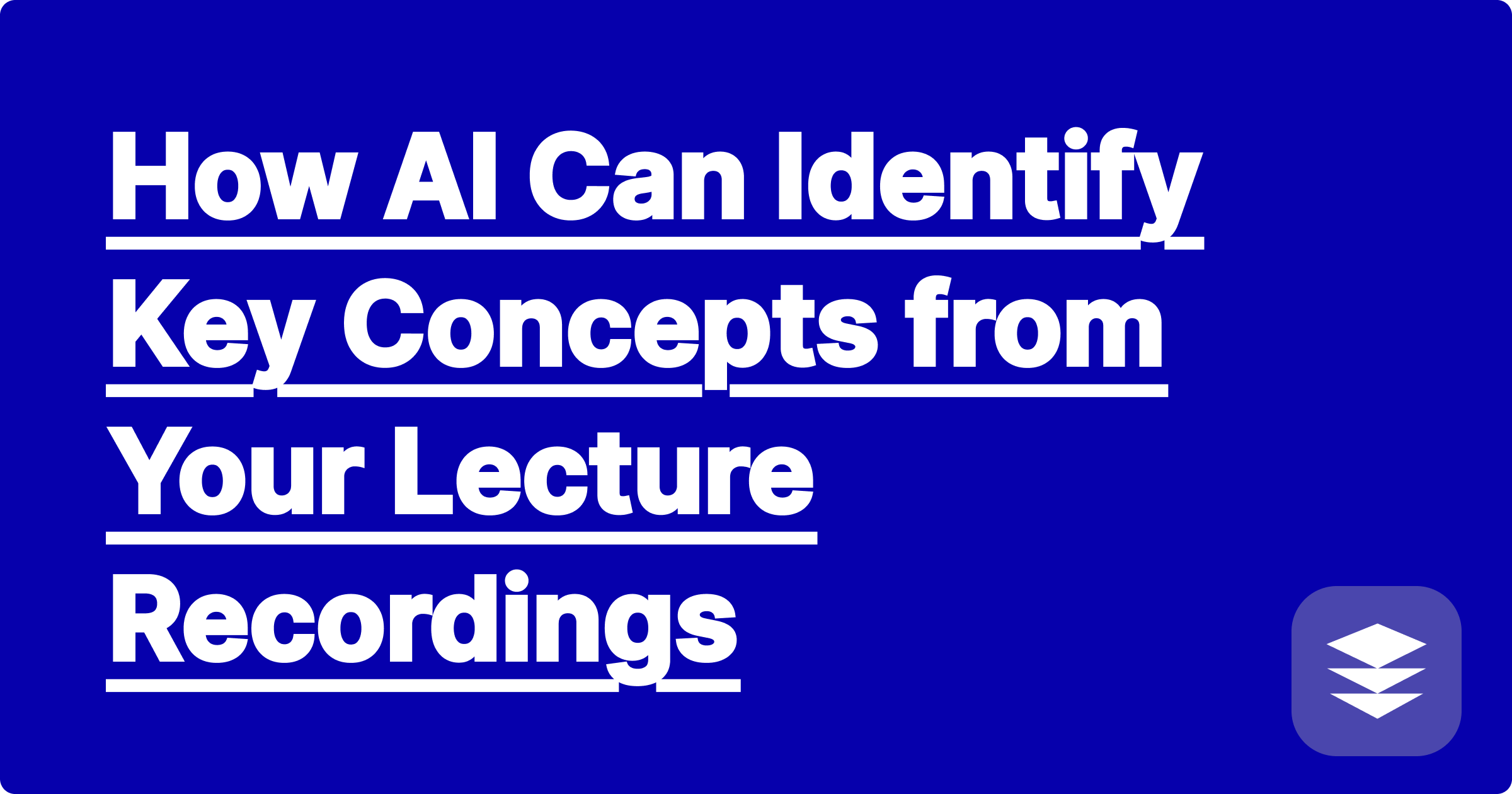
You diligently recorded every lecture this semester. You have hours of audio files—a perfect, complete record of everything your professor said. There’s just one problem: the exam is in three days, and you have zero time to listen to 30 hours of recordings.
That audio library feels more like a source of anxiety than a helpful resource. How can you possibly extract the important information from it in time? The answer lies in transforming that passive audio into active, structured notes with the help of AI.
Modern tools don't just act as a simple transcriber. A powerful lecture transcript summarizer can listen, transcribe, and most importantly, understand the content to identify the key concepts, definitions, and examples you need to know. This guide will show you how to turn your neglected audio files into your most powerful study asset.
Relying on lecture recordings alone is a flawed study strategy:
You need a way to strip away the noise and get straight to the signal. You need an audio to notes AI.
A tool like GPAI Cheatsheet is designed to handle this entire workflow seamlessly. It goes beyond simple transcription to provide true academic summarization.
First, you need to convert your audio into text. You can use a variety of transcription services available online or built into tools like Microsoft Word or Google Docs. Upload your audio file (.mp3, .wav, .m4a) and get a plain text transcript.
Pro-Tip: Don't worry if the transcript isn't perfect. A good AI summarizer can understand the context even with minor transcription errors.
Now that you have your text file, upload it directly to GPAI Cheatsheet. This is where the AI takes over from the simple transcription service.
[Image: A student uploading a .txt file labeled "Lecture_5_Transcript.txt" to the GPAI Cheatsheet uploader. Alt-text: A user uploads a lecture transcript to an audio to notes AI for summarization.]
GPAI Cheatsheet doesn't just shorten the text. It reads it with an "academic lens," looking for patterns that signify importance:
The AI then organizes these findings into structured "Knowledge Blocks" (e.g., Definitions, Core Principles, Examples).
The AI will generate a "Recommended Cheatsheet" that serves as a powerful summary of the entire lecture. From here, you can use the interactive builder to refine it:
"I had 15 lectures recorded for my economics class and no time to listen. I transcribed them and fed them into GPAI Cheatsheet. It felt like I had a personal assistant who attended every class and took perfect notes for me."
Q1: What's the difference between a transcription service and a lecture transcript summarizer?
A: A transcription service just turns speech into a wall of text. A lecture transcript summarizer like GPAI reads that text for meaning, identifies the most important academic concepts, and organizes them into a structured, easy-to-study format.
Q2: How well does this work for technical subjects with complex vocabulary?
A: It works exceptionally well. The AI is trained on academic language and can easily identify and define technical terms from subjects like biology, engineering, or computer science, even if you don't know them yet.
Q3: Can I combine transcripts from multiple lectures?
A: Yes, and this is one of the most powerful features. You can upload all your lecture transcripts for a specific unit, and GPAI Cheatsheet will create a single, comprehensive study guide covering all the key concepts from that entire section of the course.
Your audio files are a treasure trove of information, but they are useless if you can't access that information efficiently. Stop letting them collect digital dust. By using an audio to notes AI, you can transform your recordings into the most personalized and powerful study resource you have.
Ready to finally make use of those recordings?
[Try GPAI Cheatsheet today. Upload your first lecture transcript and watch it become a perfect set of notes. Sign up now for 100 free credits.]
Image to Text Math: Digitize Notes with an AI Equation OCR | GPAI Solver
Using an AI Practice Problem Generator for Your Next Exam | GPAI Solver
The Ethics of AI in Education: How to Use GPAI Solver Responsibly
The Ultimate Open-Book Exam Strategy: Build a 'Second Brain' with AI
My Professor's 100-Slide PowerPoint, Now a 2-Page Cheatsheet
How to Create a Personalized Formula Sheet for Your Physics Final
I Didn't Take Any Notes: How to Create a Study Guide from a Textbook
The Art of the 'Knowledge Block': Why Building Your Cheatsheet is Better
How AI Can Identify Key Concepts from Your Lecture Recordings
Compare & Contrast: Using AI to Create Cheatsheets for Different Subjects